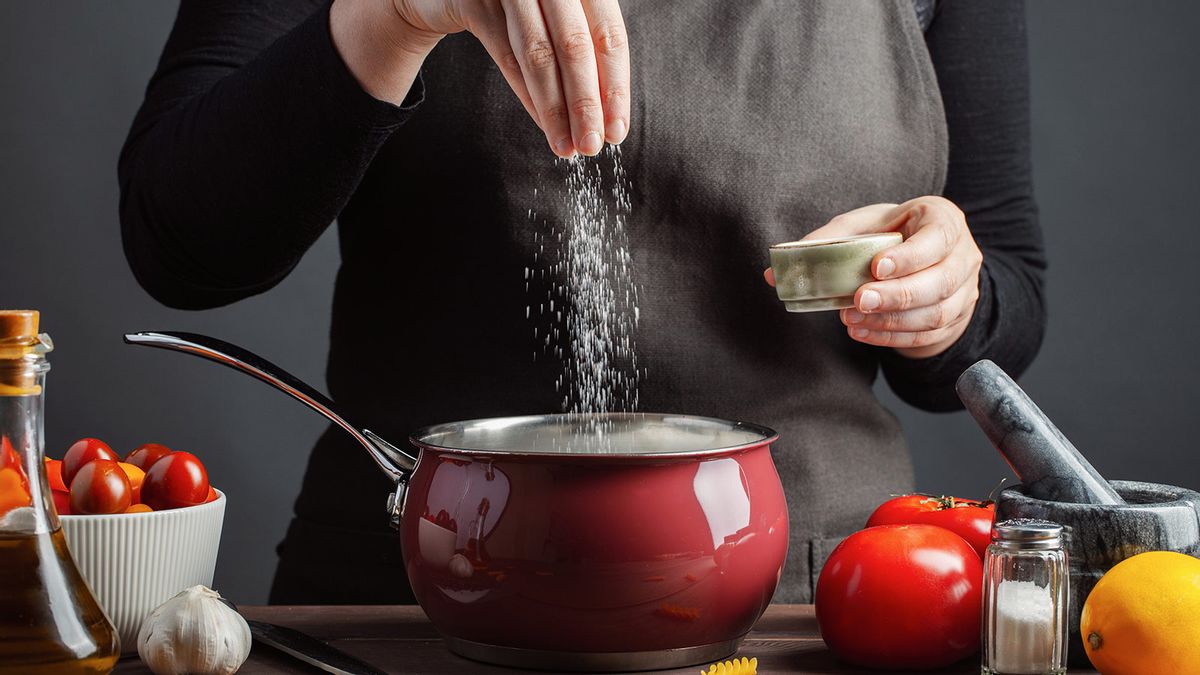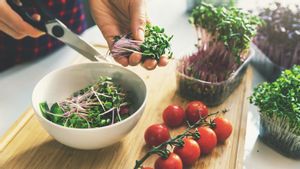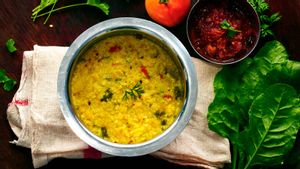Standing on a mound of sand in the Greater Rann of Kutch, all I could see was a glittering sea of silver, one of the largest salt deserts in the world. Under the moonlight, it glimmered and sparkled. It was hard to believe that just a few months ago during the monsoons, the mudflats and salt clay were awash with water. But in the darkness, the chir bhatti or salt ghosts curled up in wisps, a surreal visage of one of the most important condiments in our food history since centuries.
History of salt in India
According to food historian KT Achaya in Indian Food: A Historical Companion, salt didn’t find mention in the Rigveda in the early Vedic times, though later it occupied a place of prominence in the scullery and the texts too, assuming ritual significance. But its use in the days of yore was not as profligate as it is today.
Achaya’s book names the five most important types of salts as mentioned in the Buddhist text, the Vinaya Pitaka—rock salt (saindhava), sea salt (samudra), black salt (vida), earth salt (pansuja), and efflorescence salts (audvida). In Ayurveda too, salt enjoys an exalted position. It is heavy, hot and pungent, moistening, emetic, salivatory and peristaltic. Salt stimulates the Kapha and Pitta dosha, while reducing Vata dosha.
Salt is the most basic flavour enhancer we have available to us, and an extremely important one that not only affects taste but also the overall flavour of a dish. According to chef Amninder Sandhu, who was previously with delivery-only Iktara and Arth Restaurant & Lounge in Mumbai, “The right amount of salt is a flavour enhancer and opens up the flavours of ingredients and aromatic compounds in food.” The amount of salt one uses completely depends on the dish, and of course, an individual’s taste.
Salt and its impact on health
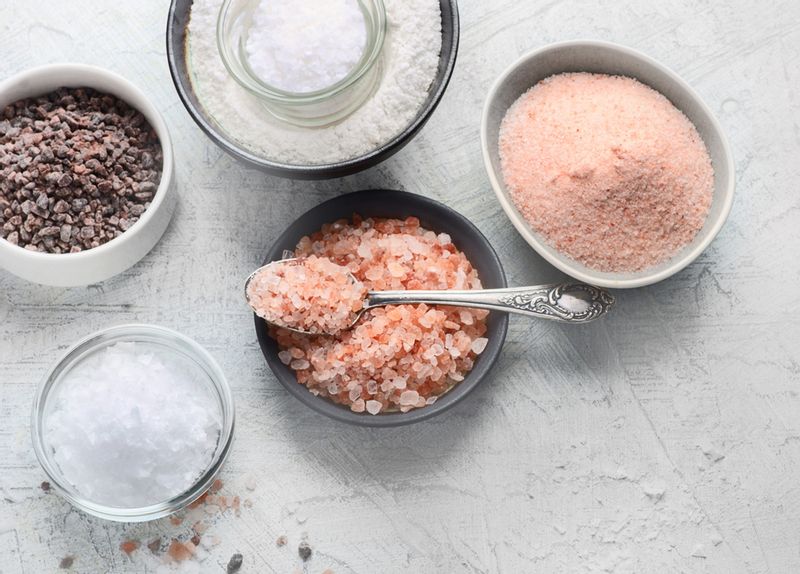
Commonly known as table salt, sodium chloride (NaCl), comprises 40 per cent sodium and 60 per cent chloride by weight. Sodium plays an important part in our well-being. It helps in nerve conduction and maintains the fluid balance in our body. But a diet high in sodium (the WHO Recommended limit is 2 grams of sodium, which is equivalent to 5 grams of salt per day) is linked with high blood pressure and stomach cancer and has an adverse impact on blood vessels, bones and even the gastrointestinal tract.
In India, the statistics are alarming. According to a recent George Institute for Global Health report, the average daily salt intake was 10.98 grams per day for Indians aged above 19, against the World Health Organisation (WHO) recommendation of 5 grams per day, putting them at the risk of cardiovascular disease and early death. An estimated 2.5 million deaths could be prevented each year if global salt consumption were reduced to the recommended level, says WHO. Cardiovascular disease is the leading cause of mortality in India accountable for some 2.3 million deaths each year.
WHO's recommendations for reducing salt intake
|
Cereals, pulses, vegetables, milk, meat and seafood are the main natural sources of sodium in our diets, providing approximately 300-400 mg of salt a day. (one teaspoon of salt is equal to the recommended limit of 5 grams of salt per day) But it’s the optional salt use that’s creating problems, due to the shift in our traditional diet from whole foods to processed and convenience foods, preserved foods, as well as canned food.
“Salt is an addiction today. Its intake varies. It can be as high as 42.3 grams a day! According to a study conducted by the Australia-based George Institute of Global Health, the southern and eastern Indian population consume more salt as compared to other states,” explains Edwina Raj, Senior Dietitian, Aster CMI Hospital in Bengaluru.
You can use alternate flavouring ingredients to enhance the food, such as fresh citrus juice or grated zest, natural vinegar, herbs such as thyme, tulsi and mint, spices such as turmeric, cumin, fennel and carrom seeds (ajwain).
Raj doesn’t advocate the use of commercially available table salt substitutes which market themselves as low sodium, which have been gaining popularity in recent times. “Low sodium salts contain excess potassium, which can lead to an imbalance,” she cautions.
The rise of the artisanal salt

In recent times, salt has found unlikely champions, who have elevated the condiment’s stodgy goodness and humble credentials. Capturing the interwebs and spawning a legion of memes was the fluid arm jerk of Nusret Gökçe, aka Salt Bae, the Turkish butcher, chef, and restaurateur and owner of Nusr-Et, a chain of Turkish steak houses.
Salt, with its recent bad rap of health, became hip and relevant to a young generation again in its raw, artisanal form. Though artisanal salts have the advantage of taste and contain trace minerals, they are poor in iodine content. For instance, Himalayan pink salt, mined from the earth, is available as salt bricks, infused salts and more contains 84 minerals and trace elements. Breaking it up, 98% of Himalayan salt is sodium chloride, with slightly lesser sodium than table salt, while containing trace minerals like potassium, magnesium, calcium, and phosphorus.
Says Prateek Sadhu, executive chef and co-owner of ingredient-driven restaurant Masque, who uses flavoured salt in the restaurant kitchen, “Salt can make or break your dish. It has the ability to round out the flavours of a dish, bring balance to a plate, and enhance the inherent taste of any number of ingredients.” He recommends that home chefs should be mindful of the ingredients they’re working with, such as cheese, which has its own saltiness. When in doubt, he recommends under salting a dish as the best policy.
Sprucing up the humble table salt, in modern kitchens, chefs also have the additional responsibility of measuring and being inventive in the use of these natural salts. Focussed on transforming Masque into a zero-waste kitchen, Sadhu makes his own flavoured salts. Trimmings and by-products are used to create unusual crystals in quirky flavours such as plum, pine, lavender and marigold. “We mix the trimmings of fruits, flowers or vegetables with salt, then dehydrate the mixture until it's dry enough to grind into a fine powder,” he says. So, while the flesh of a plum finds its way into a dessert, the salt created from its skin is often drizzled over fish, morels and even cocktails to enhance the taste.
According to chef Sandhu, one of the best tricks to ensure you don't go overboard with salt is to keep tasting a dish while it’s cooking to ensure it is perfectly salted. In her scullery, she uses Naga Spring Salt, which she discovered in Nagaland’s Khonoma village.
The local tribes make the crystals by filtering spring saltwater through wood ash in a wooden trough. Separated and placed in bamboo sections, the vessels are placed over a stone furnace. Over a period of seven to 10 days, the brine is reduced to salt. “This salt helps retain the colour of vegetables due to its high mineral content. Mellow in flavour, its texture is not as sharp as industrial salts,” she says. For something created so painstakingly, its hidden flavours are best drawn out by slow cooking processes.
In the words of the late author and food essayist MFK Fisher, “Fewer people forego the seasoning which has become a modern gastronomical necessity but should still be, according to the laws of nature, a privilege dictated by position, the priests, and the time of year.” Removing the salt cellar, the piquant jar of pickles and the packets of processed snacks from our diets will not only restore our salt-battered palates, but also improve our health, and build a healthy appreciation of this subtle yet overused enhancer.
All you wanted to know about iodised salt
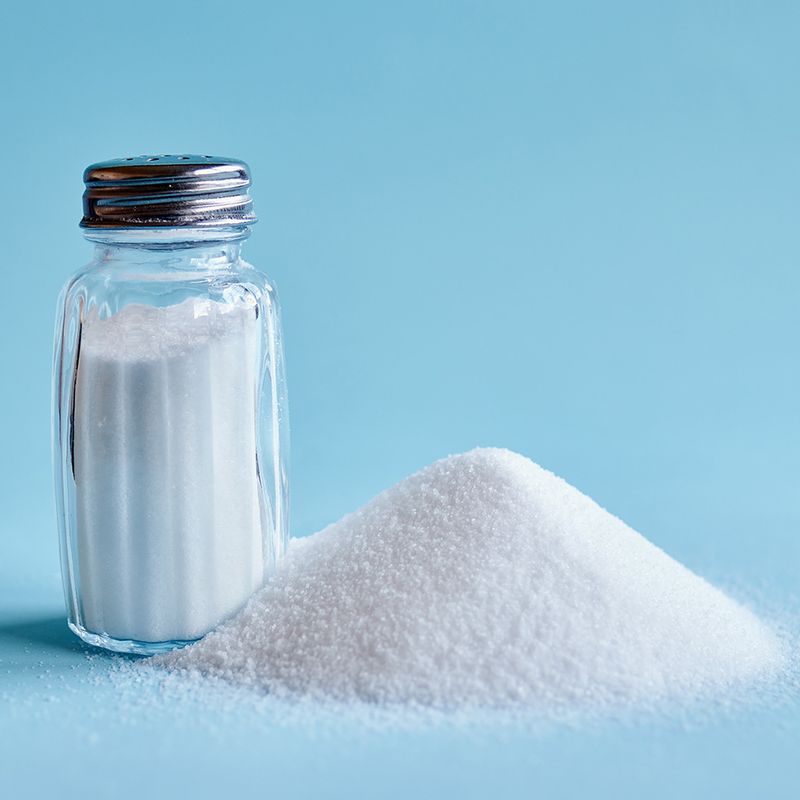
Table salt mixed with the micronutrient iodine is known as iodised salt. Consuming adequate iodine prevents iodine deficiency disorders that can lead to intellectual and developmental health complications such as goitre, cretinism, thyroid, etc. “Our tropical soil is a poor source of iodine. Thus, common salt is fortified with iodine,” says Edwina Raj, Senior Dietitian, Aster CMI Hospital in Bengaluru.
Globally, India has the largest number of children born vulnerable to iodine deficiency. The Dietary Guidelines for Indians reveals that iodine deficiency disorders (IDD) are very common among large sections of the Indian population. In 2013, about 200 million Indians were at risk of IDDs and another 71 million were suffering from goitre and other IDDs.
Raj recommends one should not replace iodised salt in their diet completely with craft and artisanal salts. “Artisanal salts have the advantage of taste and contain trace minerals, but the iodine content is generally poor in them. We recommend a combination of both to prevent iodine deficiency,” she says. If you choose to consume craft salts, it is advisable to include iodine-rich foods such as seaweed, egg, cheese, milk, yoghurt, sweet potatoes and bananas in your diet.
The world of artisan salts
According to Mark Bitterman, a selmelier and craft salt evangelist, and the author of Salted: A Manifesto on the World’s Most Essential Mineral, there are two basic types of salt: Artisan Salt and Rock Salt. Artisan Salt is evaporative salt that is extracted from water by evaporation from saltwater seas, lakes or springs, while Rock Salt is found in a crystalline state in the ground, either as surface deposits of dried salt lakes, or underground deposits from ancient oceans.
In India, apart from Himalayan Salt, flavoured sea salts and other blends are also available. Foodhall offers a variety of salt under its brand Arqa, such as Himalayan salt (also in the form of a block and a bowl), pink peppercorn salt, paprika and basil salt, lemon thyme and garlic salt, black salt, and even flavoured salt in test tubes.
According to Swasti Aggarwal, Food Strategist, at the brand says, “Salt flakes and flavoured salts can be used in salads or dips. The salt block can be heated on a grill and meat can be marinated on it. A salad can be tossed directly in a salt bowl as well!” Tangy salts, such as Zama Organic’s Timur Salt, made using Indian Sichuan pepper can be used in curd or to add zing to lemonades and beverages.


